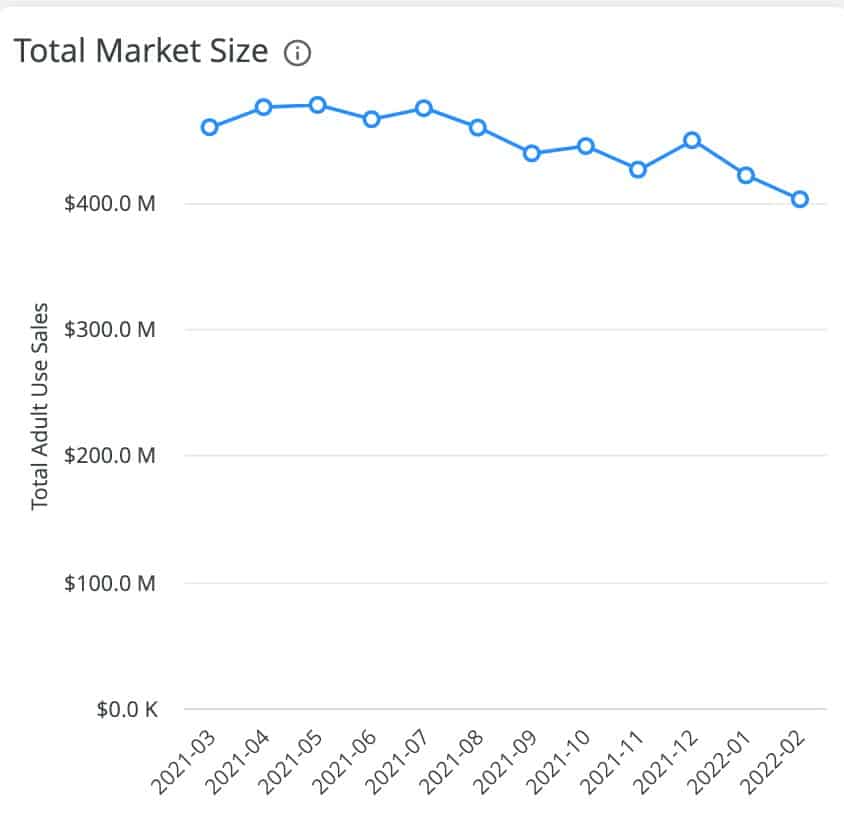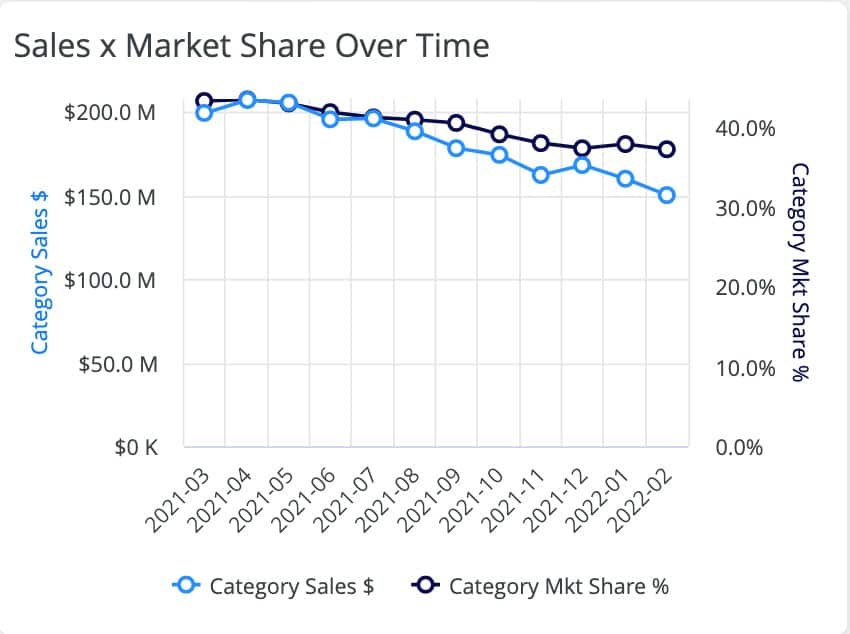California’s Cannabis Market: ‘A Recipe for Disaster’
Marijuana Industry News March 15, 2022 MJ Shareholders
Cannabis sales in California are on the rise, but the state’s regulated industry continues to struggle.
But if it’s not sales numbers holding back licensed operators from thriving, then what is?
According to Jocelyn Sheltraw, Director of Industry Relations for Headset, a provider of cannabis data and marketing solutions, the biggest hurdles for California’s licensed cannabis businesses are:
- an imbalance between supply and demand,
- wholesale price compression,
- a declining market share for flower,
- high taxes
- and a still-thriving illicit market.
“It’s just a recipe for disaster,” Sheltraw tells Cannabis Business Times. “It’s just created turmoil on the cultivation side.”
RELATED: ‘Surviving is Thriving’ in California’s Cannabis Market
Sheltraw, who also serves on the board of directors for the California Cannabis Industry Association (CCIA), says that, overall, legal cannabis sales in the state have continued to grow.

Images courtesy of Headset
From February 2021 to February 2022, for example, Sheltraw says the market saw 7% growth, although on a month-over-month basis over the last 12 months, sales figures are beginning to return to where they were prior to the COVID-19 pandemic.
For example, Sheltraw says that in April 2021, monthly cannabis sales in California were just over $475 million. Then, in February 2022, sales dipped to $402 million for the month.
“You can see that even though as a market, we’re growing—this is a higher sales percentage than we saw last year or higher monthly sales than we saw last year—we’re starting to see sales that are just declining in the market,” Sheltraw says. “We’re seeing sales retracting to pre-COVID levels. We’re seeing a sales decline month over month.”
For California’s licensed cannabis cultivators, there are much more complex issues at play. While sales in the regulated market continue to grow, Sheltraw says this growth isn’t necessarily translating to individual licensed cannabis businesses due to a variety of factors.
One of these, she says, is an imbalance between supply and demand.
One-third of California’s municipalities allow adult-use cannabis businesses to operate in their jurisdictions, and Sheltraw says there are roughly 850 licensed retailers and 1,000 brands throughout the state.
“You have this unequal balance where you’ve got more brands than you do retailers,” she says. “This is creating a surplus of supply in the state because we just don’t have enough retail outlets that can move all of that existing supply, but the demand is there.”
Without enough state-licensed shops to adequately meet demand, Sheltraw says the illicit market ultimately absorbs consumers’ buying power.
In 2020, California’s legal cannabis sales reached $4 billion, while Global Go projected that that state’s illicit market sales exceeded $8 billion.
“That’s creating a problem for a lot of the cultivators, a lot of the brands, because they just can’t compete with the illicit market because of the increased cost of doing business [legally],” Sheltraw says, adding that a licensed cannabis business pays two to three times what an illicit operator pays to get product to market.
The month-over-month decrease in sales likely reflects demand moving to the illicit market, she says, and increased competition between the legal and illicit markets has created price compression.
A declining market share for flower is also wreaking havoc on California’s licensed cultivators, Sheltraw adds.

In March 2021, for example, flower sales totaled roughly $207 million, or just above 43% of total sales. In February 2022, flower sales totaled roughly $150 million, or about 37% of total sales.
“We’re not seeing an influx of new consumers that are entering the market,” Sheltraw says. “It’s more so when sales were spiking in 2020, that was existing consumers that were already in the market. A lot of those consumers were flower lovers, but as we’ve had new product innovation, we start to see some of those consumers move into new product categories.”
For many of California’s licensed cannabis operators, the pressure is becoming too great. Sheltraw says that without a drastic shift in state policy, many businesses will be forced to close up shop.
While larger, well-capitalized companies may be in a better position to weather the storm than smaller, self-funded legacy operators, Sheltraw says businesses of all stripes are affected by California’s unstable cannabis market.
Many of the state’s cannabis trade groups are banding together to appeal to the Legislature and, ultimately, Gov. Gavin Newsom to send help—and fast.
“You’ve seen a lot of these associations now joining forces and they’re all going to the state, they’re going to Gov. Newsom, and they’re saying, ‘Look, this is not sustainable. We’re going to lose all these craft cultivators that are part of our history in California. Do we want this as a state?’” Sheltraw says.
Newsom and the Legislature do seem to understand the issues that are threatening California’s regulated cannabis industry, and a few key pieces of legislation are on the table this year to provide relief to the state’s licensed businesses.
In January, Newsom included a plan in his state budget proposal that aims to reform the state’s tax policy and help California’s municipalities open up more legal cannabis retailers.
Separately, California Sen. Mike McGuire has introduced a bill that would end the state’s flat-rate cannabis cultivation tax on July 1.
Assemblymember Jim Wood has taken aim at the state’s lack of legal cannabis retail outlets with legislation that would authorize the California Department of Cannabis Control to issue temporary cultivator event retail licenses to allow small farmers to sell their cannabis products at local events throughout the state.
Sen. Scott Wiener has also come to the industry’s aid with a bill that would require all California cities and counties to provide consumers access to medical cannabis, either by hosting brick-and-mortar dispensaries or by allowing medical cannabis deliveries within their jurisdictions.
“I think at the heart of this, it’s a regulatory [or] a policy matter that I think people are really trying to get across,” Sheltraw says. “We need policy reform.”
Overall, Sheltraw is optimistic about the fate of California’s cannabis market, especially when comparing it to other legacy markets on the West Coast that may be facing even more dire economic trends.
Oregon, another oversaturated market, is experiencing -10% growth, for example, while Washington is seeing -7% growth.
While California’s market isn’t growing as fast as East Coast markets that have recently come online (Sheltraw says Massachusetts is experiencing 36% growth, for example), it is, in fact, growing.
“We’re doing $500 million in monthly sales, which is incredible,” Sheltraw says.
MJ Shareholders
MJShareholders.com is the largest dedicated financial network and leading corporate communications firm serving the legal cannabis industry. Our network aims to connect public marijuana companies with these focused cannabis audiences across the US and Canada that are critical for growth: Short and long term cannabis investors Active funding sources Mainstream media Business leaders Cannabis consumers










